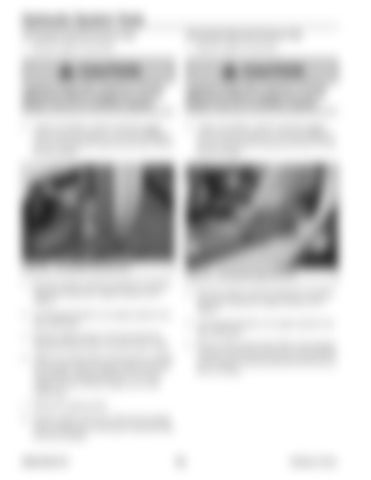Hydraulic System Tests Tilt Cylinder Rod End Pressure Test
Lift Cylinder Base End Pressure Test
1. Stop the engine if necessary.
1. Stop the engine if necessary.
CAUTION
CAUTION
A pressure gauge with a minimum of 414 bar (6000 psi) is required. Damage may result to gauges if they are of insufficient capacity.
A pressure gauge with a minimum of 414 bar (6000 psi) is required. Damage may result to gauges if they are of insufficient capacity.
2. Using a tee fitting, connect a pressure gauge with a minimum capacity of 414 bar (6000 psi). into the rod-end port connection (Q, Fig. 530) on the tilt cylinder.
2. Using a tee fitting, connect a pressure gauge with a minimum capacity of 414 bar (6000 psi). into the rod-end port connection (P, Fig. 531) on the lift cylinder.
P Q
Fig. 530 – Tilt Cylinder Rod End Port Fig. 531 – Lift Cylinder Base End Port
3. Run the machine until the hydraulic oil reaches operating temperature (approximately 60°C/ 140°F). 4. Use the hand throttle to set engine speed to low idle (1000 rpm). 5. Push the right joystick to the left and tilt the attachment hitch all the way back until it stops. 6. While an assistant observes the pressure reading on the gauge, push the right joystick to the left. The pressure reading should be 237-245 bar (3448-3552 psi) with the engine at low idle (1000 rpm).
3. Run the machine until the hydraulic oil reaches operating temperature (approximately 60°C/ 140°F). 4. Use the hand throttle to set engine speed to low idle (1000 rpm). 5. Pull the right joystick back (ISO control pattern controls), or push the left joystick to the left (DH control pattern controls) and raise the lift arm as far as it will go.
7. Release the right joystick. 8. Stop the engine and remove the pressure gauge and tee fitting from rod-end port connection (Q) on the tilt cylinder.
50940165/C0718
292
Printed in U.S.A.






































































